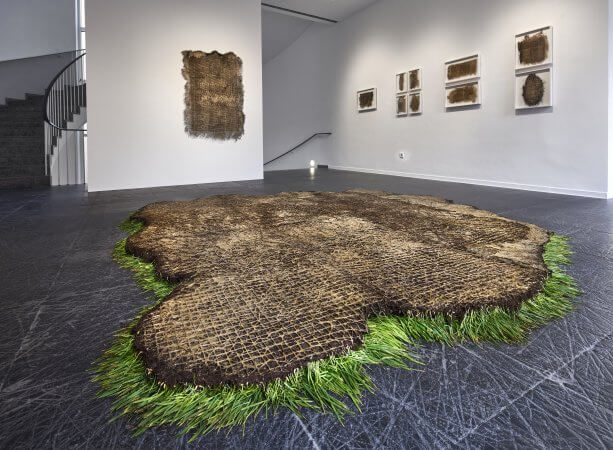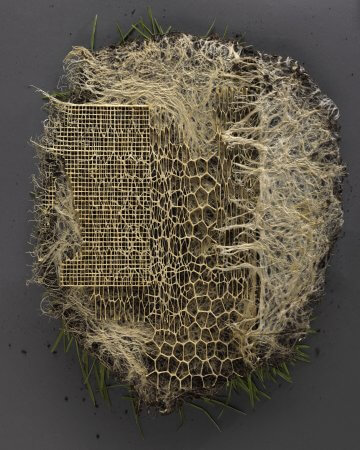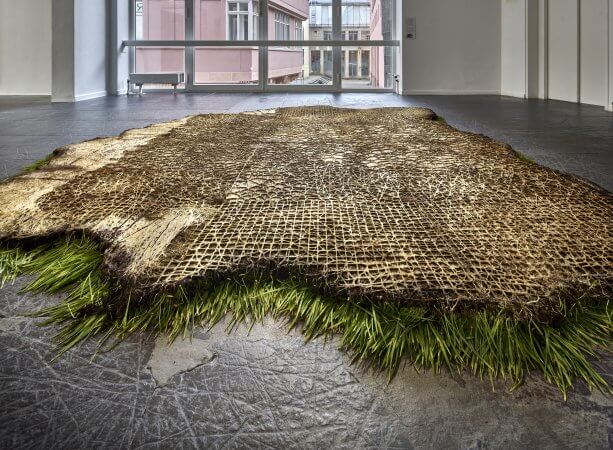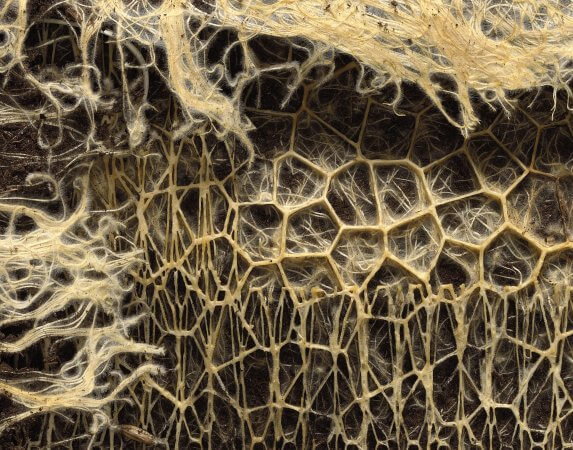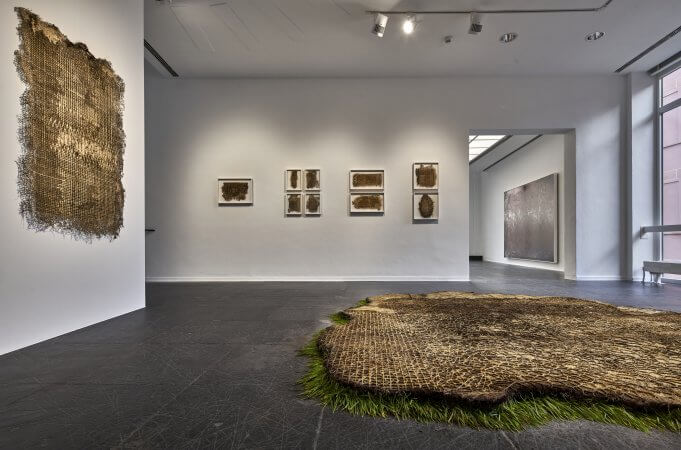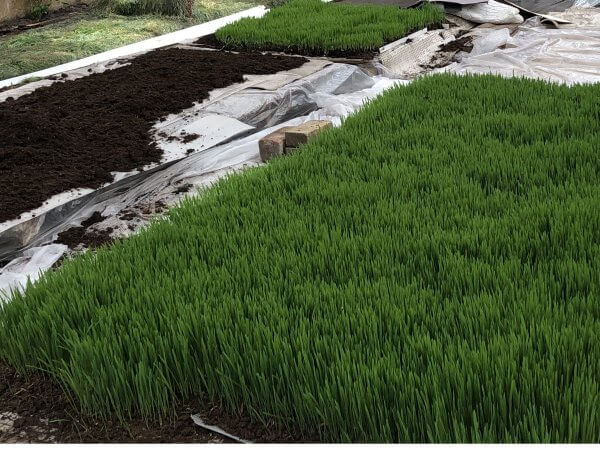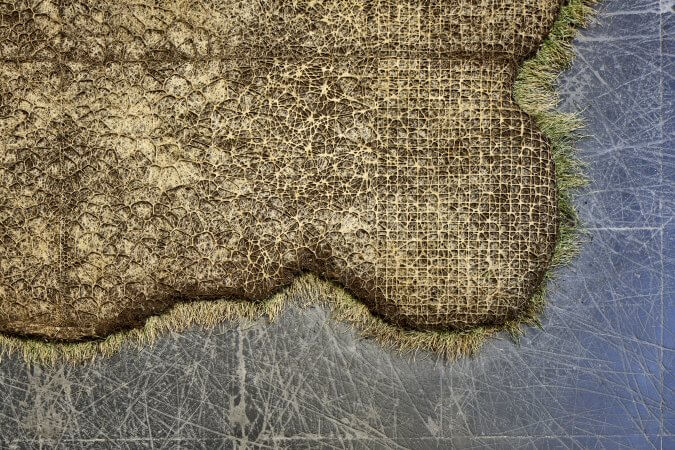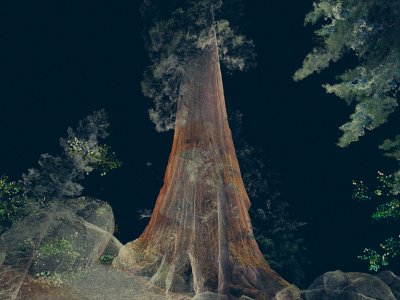Diana Scherer
Interwoven, 2021
Plantroots oats
150 x 120 cm
Hyper Rhizome #4, 2021
Plantroots oats, framed
42 x 58 cm
Hyper Rhizome #6, #7, #3, #8, 2021
Plantroots oats, framed
36 x 27 cm
Interwoven #8, #9, 2021
Plantroots oats, framed
33 x 58 cm
Interwoven #10, #11, 2021
Plantroots oats, framed
45 x 42 cm
Interwoven, 2021
Plantroots oats
300 x 300 cm
Courtesy the artist
Since the beginning of time, the relationship between man and nature has been a field of tension between contemplative admiration and the will to control. The concept of nature, however, remains fluid over the ages and changes, just as the self-image of man changes.
Diana Scherer is an artist who has been working with the root systems of living plants since 2012. Her works emerge from structures that take place through the natural growth of seeds in an artificial manipulation of root propagation. Through years of observation, Scherer developed techniques to work with the plant to create new forms and new weaves. The artist makes use of the intelligence of plants and makes their hidden world visible.
Scherer uses templates, shapes that she places under the soil. She has developed different techniques: as an artist she shows the root structures with soil and stones, as a designer she shows only their bare structure. The templates are made of the bioplastic PLA and can be reused. Scherer derives the patterns from traditional forms based on the geometry of nature, such as the hexagonal honeycomb structures or the leaf pattern. On the templates, the artist sows seeds and waits for the plants to complete their growth.
Scherer has experimented with many types of seeds. Grasses and cereals, especially oats, wheat and maize are her favourite varieties because they grow quickly and their roots are strong. The artist speaks of her artistic practice as a manipulation of nature. She perceives in her human work with living beings, with plants, an inner conflict, which takes place between a sense of reverence for the nature and cruelty in the exercise of coercion and destruction. It reflects the dependence of human beings, who have always secured their existence through the cultural use of their natural environment.
Scherer thematises the coercion with which she herself manipulates living plants. According to the artist, her works leave no room at all for the roots to do what they want. The work is essential: only the naked plant and manipulation.
Her artistic practice is similar to the work of scientists who observe and classify natural phenomena in order to transform and use them culturally. Roots react situationally to their environment and adapt to it individually. How these processes function and whether this characteristic can be regarded as the intelligence of the plant has been part of a discursive polarisation within the botanical scientific community in recent years. Scherer collaborates with scientists, plant biologists from Delft University of Technology and Radboud University in Nijmegen, to deepen her understanding of root systems. In addition to her studio in Amsterdam, she has a workspace in the greenhouse of Radboud University Nijmegen, where she can work during the winter.
For the Frankfurter Kunstverein, Diana Scherer has created one of her large, living floor works Interwoven, for which she allows oat seeds to grow into a fabric. Only a few hours before the exhibition opens, the artist turns the plant fabric so that the bare roots are revealed to the visitors. Fragile and beautiful, they lie exposed to the light and air without protection. It is kept alive by watering it for a few days longer. The price of visibility lies in the ephemerality to which the living roots are exposed.
Diana Scherer (*1972, Lauingen, DE) is a visual artist living and working in Amsterdam (NL), where she studied fine art at the Rietveld Academy. Her practice encompasses botany, photography, material research and sculpture. Over the past years she has exhibited in several international solo and group shows at Textile Museum, Tilburg (NL), Victoria & Albert Museum, London (UK), Stedelijk Museum, Amsterdam (NL), RIXC Art Science Festival, Riga (LV) and will soon exhibit in Biennale of Sydney (AU) and MIT Museum, Boston (US). She published two books at Van Zoetendaal Publishers; Nurture Studies (2015) and Mädchen (2017). Her project Interwoven was honoured to receive the New Material Fellow Award, which is a biennial prize organised by Het Nieuwe Instituut in Rotterdam (NL) that challenges artists and designers to develop and apply sustainable materials and innovative technologies.

